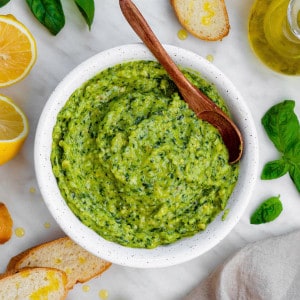
This homemade cashew pesto is an easy recipe packed with fresh flavors. It's perfect for pizza, pasta, lasagna, or to just spoon on top of veggies.
Pesto is one of those things that can take any dish to the next level. I like to make a big batch and keep it in the fridge for when I need to add a boost of flavor to my meals.
Traditional basil pesto uses pine nuts, but since they're expensive and harder to find, I like to use cashews instead. They are much more affordable and give the pesto a creamy texture.
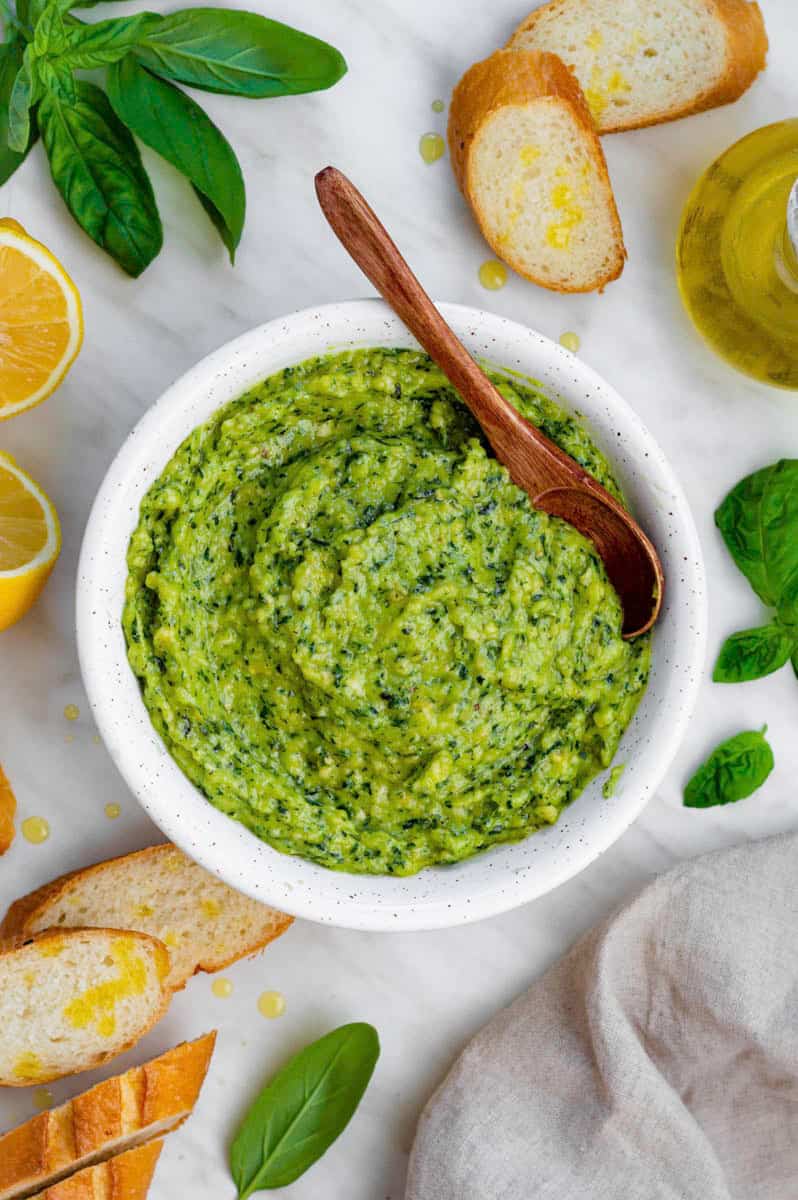
Jump to:
Ingredients You'll Need
Get all the details on these simple ingredients in the recipe card found at the bottom of the post.
- Fresh basil leaves: Make sure to use sweet basil, not Thai basil. You can also substitute half of the amount of basil with other fresh herbs like parsley.
- Cashew nuts: I like to use raw cashews and not roasted cashews, because they can be quite salty. This way you can control how much salt you want in your pesto.
- Olive oil: To make the best cashew pesto, make sure to use high-quality extra virgin olive oil.
- Parmesan cheese: I use parmigiano reggiano, but you can also use pecorino romano or grana padano. Whatever cheese you use, make sure to freshly grate it. Pregrated cheese doesn't taste the same.
- Fresh garlic: Mince the garlic cloves before adding them to the rest of the ingredients.
- Lemon juice: It's an optional ingredient, but I recommend it. You can also add the lemon zest for a bit of pop of flavor.
- Salt and black pepper: To taste.
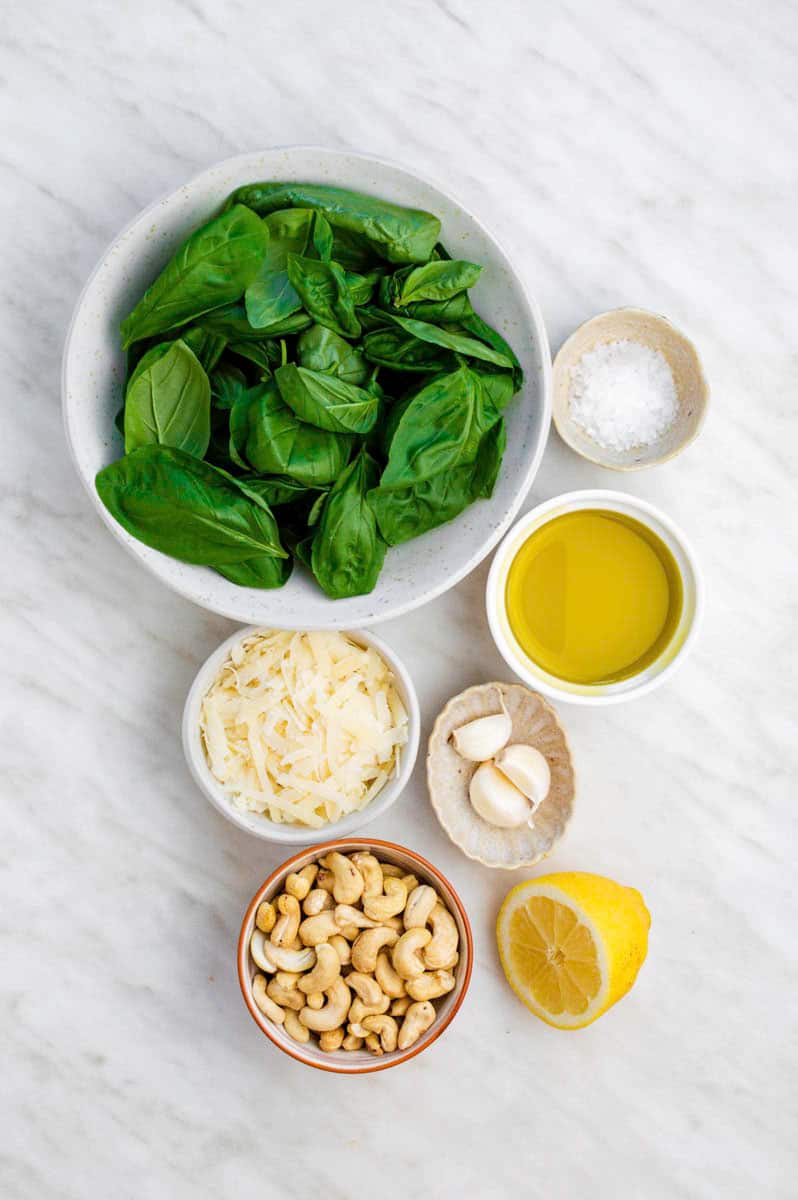
How to Make Basil Cashew Pesto
- Heat a skillet over medium-high heat. Once hot, add the cashew and toast them with no oil for 1-2 minutes until both sides are golden. Set aside and let them cool completely.
- Add the cooled cashews and basil leaves to a food processor and pulse for 10-20 seconds to roughly chop.
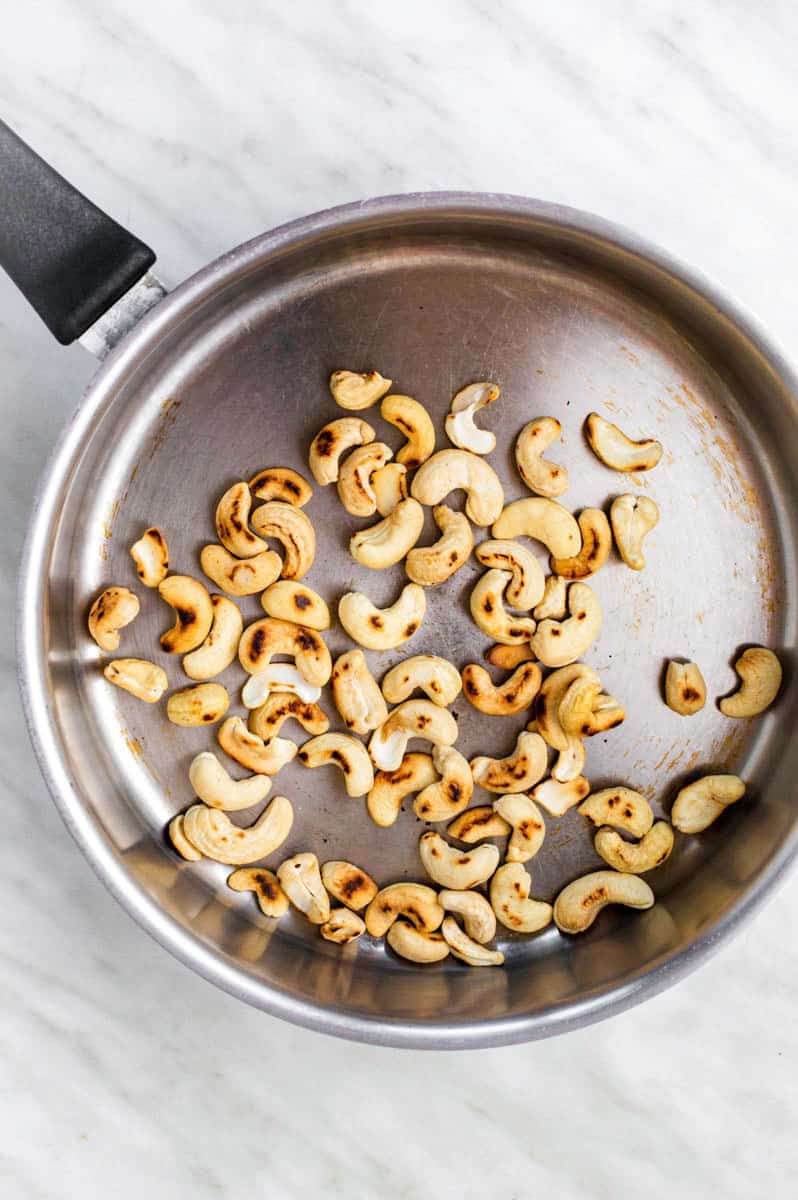
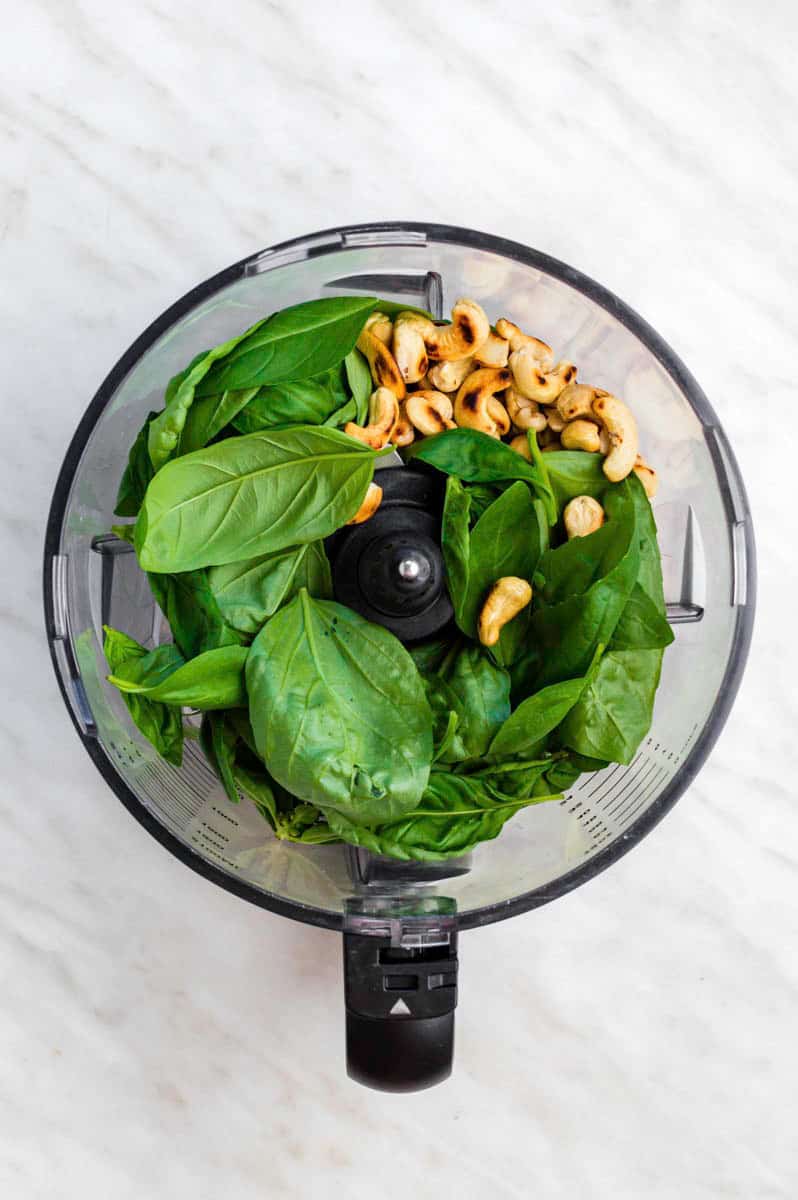
3. Add the parmesan, minced garlic, and lemon juice and pulse for a few more seconds until the mixture is crumbly.
4. Slowly, start pouring the olive oil while blending the cashew pesto on low speed. Then, blend on high speed for 30 more seconds. Finally, add salt and black pepper to taste.
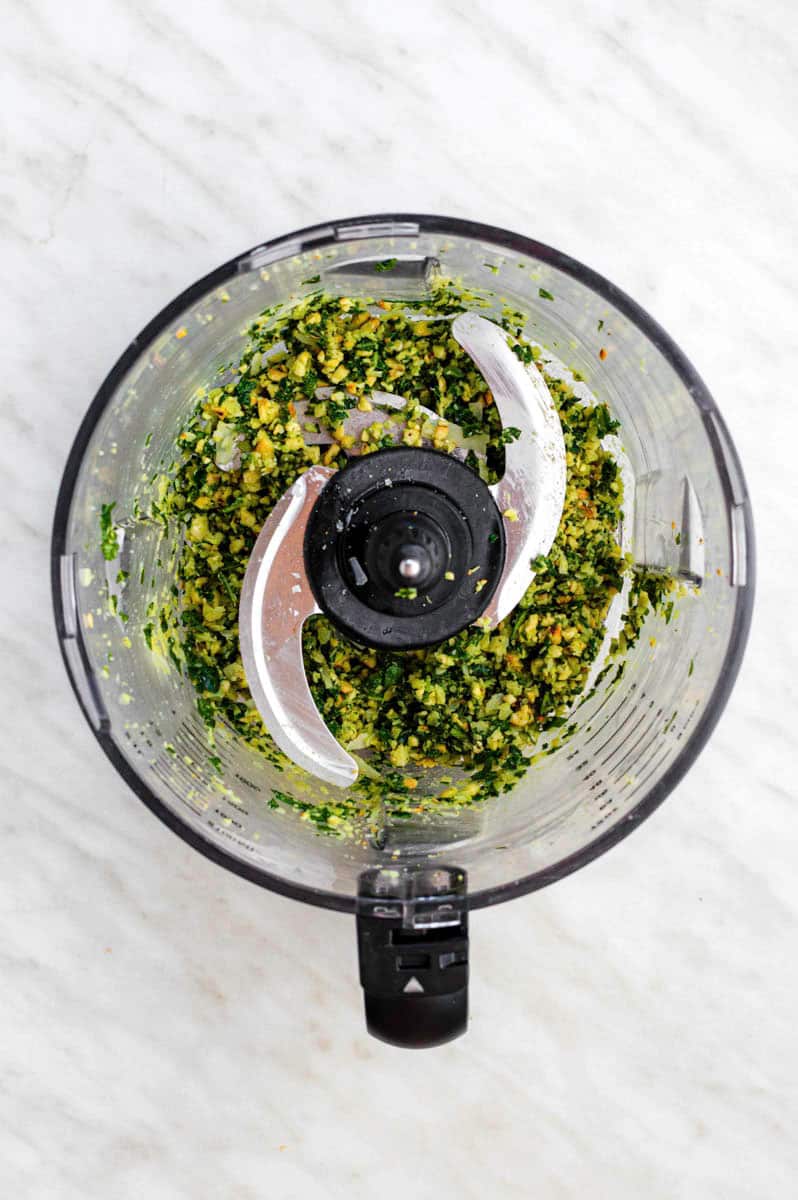
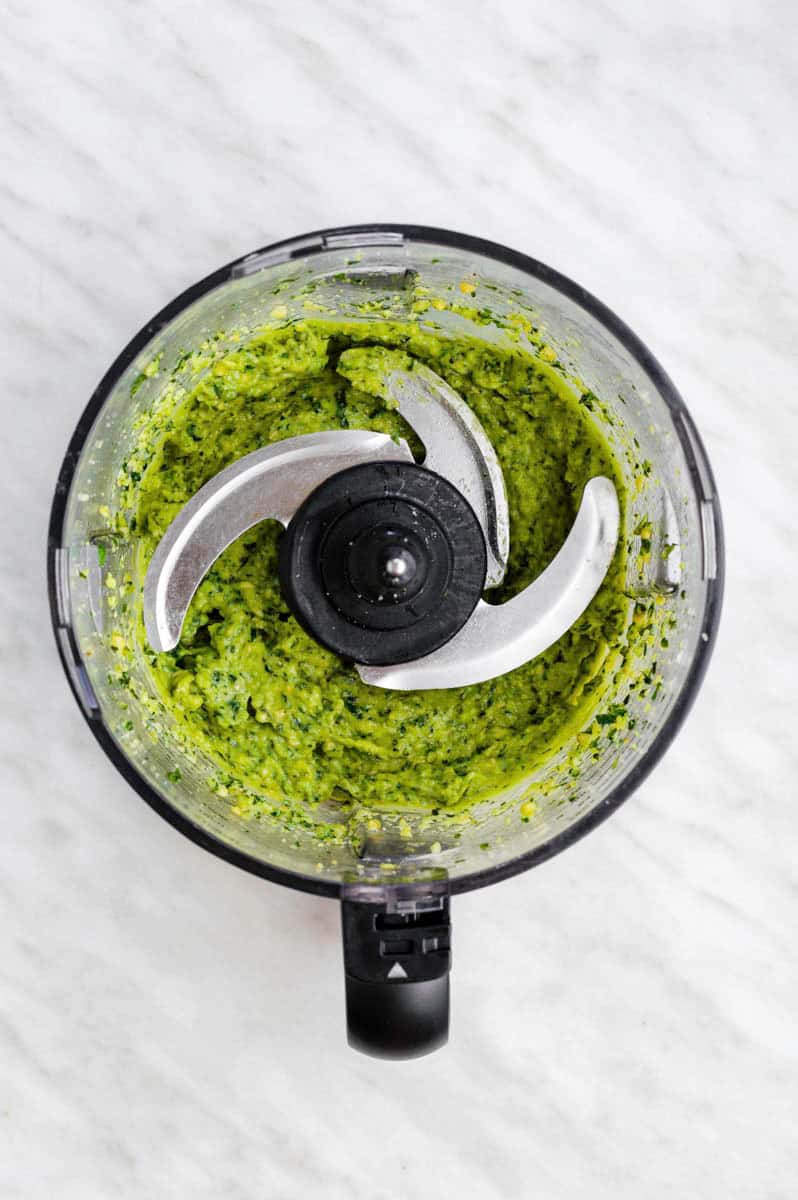
Top Tips
- Toast the cashews. This elevates the nutty flavor of the cashews and adds richness to the pesto. It's an optional step, but it takes just 5 minutes and makes a big difference.
- Pour the olive oil slowly. If you add it all at once the olive oil won't emulsify with the rest of the ingredients, which means that the pesto will separate.
- Add salt at the end. We all know that pesto can be quite salty. The best part about making it at home is that you can control the saltiness. I recommend you to taste the pesto and add the salt at the end to avoid oversalting it in the beginning.
- Don't over-blend. Blend just until everything is well combined. Over-blending can make your cashew pesto separate.
- Adjust the texture as needed. You can add more or less olive oil depending on how thick you want your pesto. I usually add a bit more to thin it out.
Frequently Asked Questions
To make vegan cashew pesto, substitute the parmesan cheese with the same amount of nutritional yeast.
Pesto is an emulsion between the oil and the rest of the ingredients. To make a successful emulsion, you need to have all of the ingredients at room temperature. So it's really important to wait for the cashews to cool completely.
Yes! Transfer pesto to an airtight container or scoop it into ice cube trays and freeze for 6 months.
Yes, you can use almost any nut you like such as almonds, walnuts, pecans, and as in the traditional pesto- pine nuts. You can use sunflower seeds or pumpkin seeds if you're allergic to nuts.
If you want to use less olive oil, you can replace some of it with water, but no more than ¼ cup of water. If you add more than that you'll dilute the flavor and it won't taste the same way.
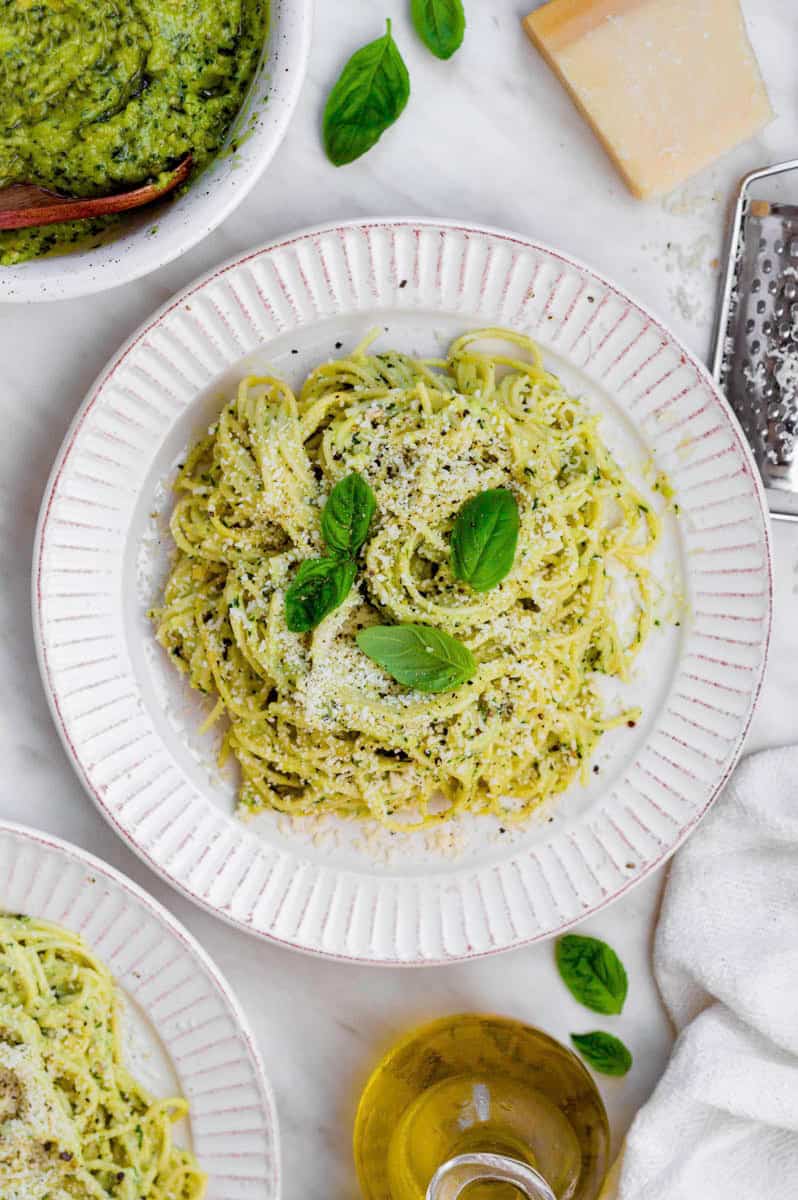
Storage
Transfer cashew pesto to an airtight container and save it on the counter for 3 days or in the fridge for up to a week.
Serving
This cashew pesto is a great way to add flavor to any pasta dish. I like to add it to tomato sauce, dollop it over roasted vegetables, or use it when I am making a salad dressing.
You can also use your favorite pasta and make pesto pasta! I like to toss spaghetti with some pasta water and a few tablespoons of pesto into a bowl. Just make sure to not heat the pesto, because you will lose the vibrant flavor.
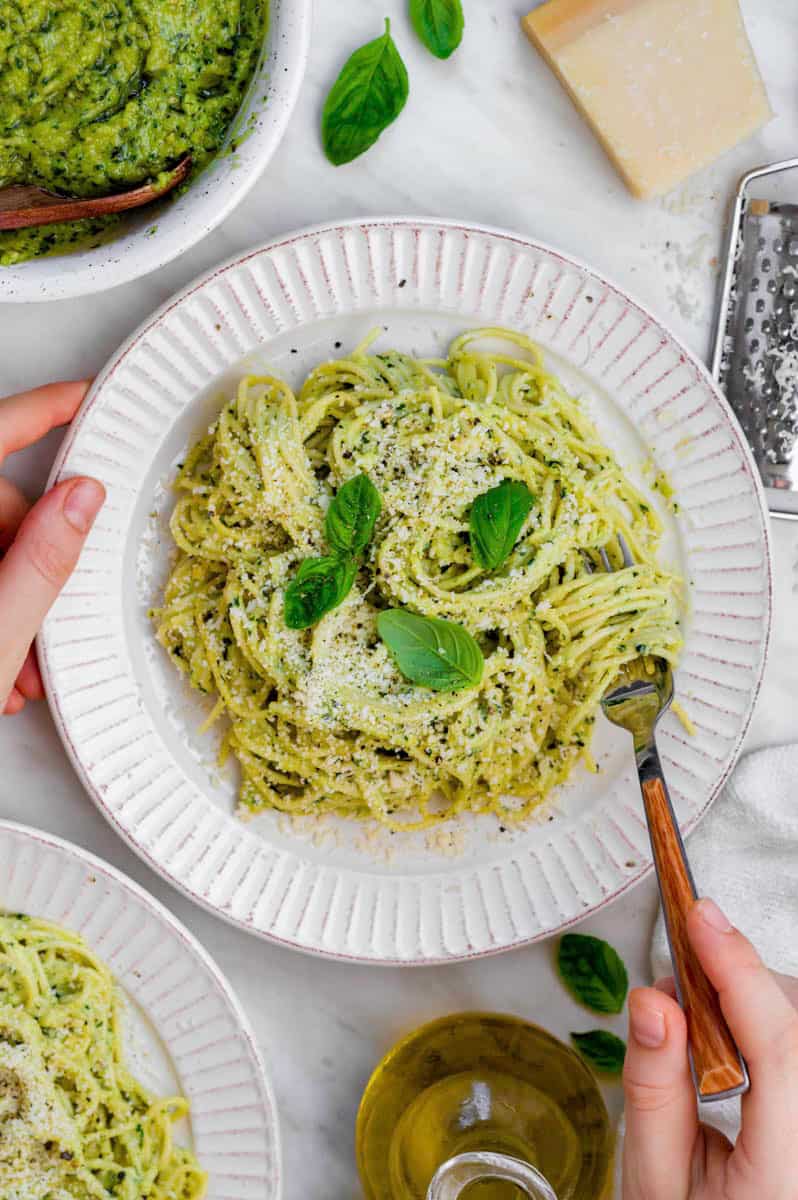
More Sauce and Dressing Recipes
Cashew Basil Pesto Recipe
Ingredients
- 1 oz (30g) fresh basil leaves (use sweet basil, not Thai basil)
- ½ cup (75g) cashews, raw
- ½ cup extra virgin olive oil, or more as needed
- ½ cup (45g) Parmesan cheese, freshly grated
- 1-2 tablespoon lemon juice (optional, but recommended)
- 3 cloves of garlic, minced
- Salt and black pepepr, to taste
Instructions
- Heat a small skillet over medium-high heat. Once hot, add the cashew and toast them with no oil for 1-2 minutes until both sides are golden. Let them cool completely before making the pesto.
- Add the cooled cashew and basil leaves to a food processor and pulse for 10-20 seconds to roughly chop. Add the parmesan, minced garlic, and lemon juice and pulse for a few more seconds until the mixture is crumbly.
- Slowly, start pouring the olive oil while blending the pesto on low speed. Make sure to not rush this process or the pesto will separate.
- Once you've added all of the olive oil, blend on high speed for 30 more seconds. Finally, taste the pesto and add salt and black pepper to taste.
(Please refer to the post above for instructional photographs and other helpful information for this recipe)
Suggested Equipment/Tools
Notes
- Toast the cashews. This elevates the nutty flavor of the cashews and adds richness to the pesto. It's an optional step, but it takes just 5 minutes and makes a big difference.
- Pour the olive oil slowly. If you add it all at once the olive oil won't emulsify with the rest of the ingredients, which means that the pesto will separate.
- Add salt at the end. We all know that pesto can be quite salty. The best part about making it at home is that you can control the saltiness. I recommend you to taste the pesto and add the salt at the end to avoid oversalting it in the beginning.
- Don't over-blend. Blend just until everything is well combined. Over-blending can make your cashew pesto separate.
- Adjust the texture as needed. You can add more or less olive oil depending on how thick you want your pesto. I usually add a bit more to thin it out.
Nutrition
Post photography by: Petranka Atanasova.
©Watch Learn Eat. All content and images are copyright protected. Recipes and photos are not to be used or republished without prior permission. If you adapt this recipe, please re-write the recipe in your own words, and link back to this post for the original recipe.

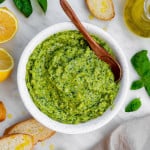
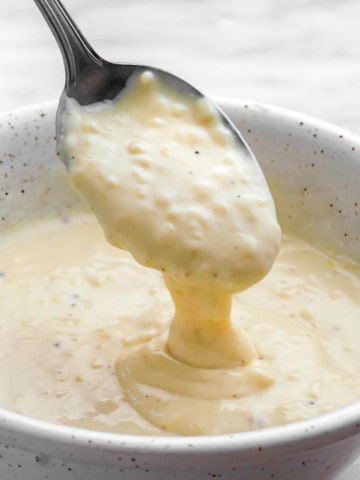
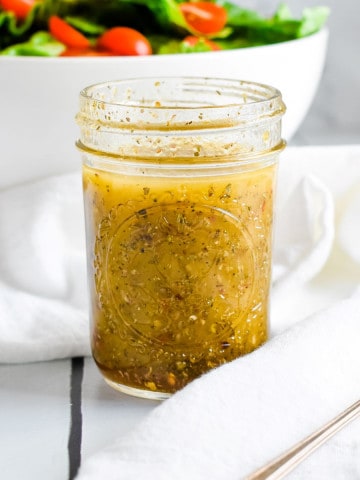
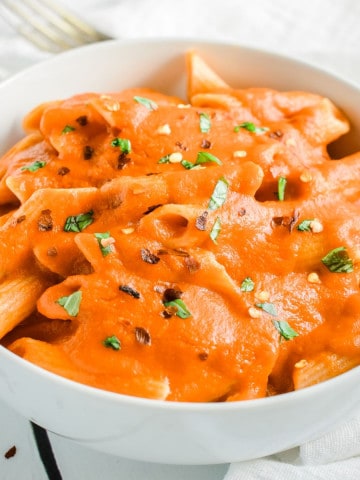
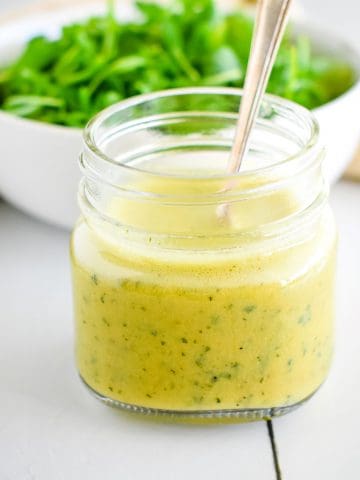
Leave a Reply